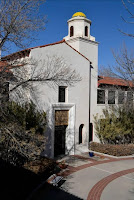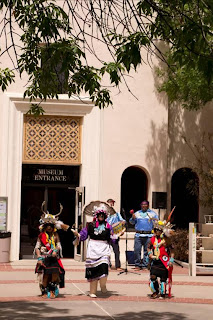Talk to anyone in the profession, and you may hear that a lot has changed in the art conservation field. In the past, conservators often toiled behind the scenes, but in recent years conservation has become a much more visible profession. Today, some museums have conservation labs open to public view. Many institutions and private conservators use social media to get the word out about their work, and exhibitions and the accompanying catalogues often feature the contributions and perspectives of conservators. As a result, more and more people discover conservation, making entry into an academic training program more competitive than ever.
As a prospective student in the US, one way to expand your ideas about your future in the profession might be to consider undergraduate or graduate study outside of the United States and Canada. If you have the flexibility and desire to explore another country and culture, one of these programs might be for you. Some of them offer training in specialties that might mesh with your specific interests and experience, enabling you to make a strong application. (Anyone interested in building and conserving clocks? Set your sights on West Dean!) These programs are often just as competitive as those in the US, if not more so (The Courtauld Institute program accepts eight students once every three years). However, some have a stated interest in receiving applications from candidates outside the country. Perhaps your experiences will bring diversity to the composition of an incoming class, strengthening your application in that way.
If you are not aware of it, Queen’s University in Kingston (Ontario, Canada) has a highly respected graduate program:
http://www.queensu.ca/art/artconservation.html
Here are a few universities in the UK that offer graduate programs in English. Be sure to contact the schools you are interested in to fully understand how the degrees correspond to those awarded in the US. For example, in the UK, the “first degree” is the bachelor’s and is a 3-year program. Then, you would read for a graduate diploma, usually one year, and a post-graduate diploma after that. Following that, the master’s degree can be earned.
West Dean College
West Sussex, UK
MA, Conservation Studies
Graduate and Post Graduate Diplomas in Books & Library Materials, Clocks, Ceramics, Furniture, Metalwork. Programs in Stringed Instruments and Buildings, Interiors, and Sites.
http://www.westdean.org.uk/West%20Dean%20Prospectus%2011-12.pdf
Camberwell College of Arts, London, UK
MA, Conservation (2-year program new in 2011)
Art on Paper, or Books & Archival Materials
http://www.camberwell.arts.ac.uk/courses/coursesbylevel/graduateschoolcourses/maconservation2year/
Cardiff University, Wales
School of History, Archaeology, and Religion
BSc, Conservation
MSc, Conservation Practice
Cultural heritage, archaeological materials
http://www.cf.ac.uk/share/degreeprogrammes/archaeology/postgraduate/
City & Guilds of London Art School
BA, Conservation Studies (Stone and wood sculpture)
Post Graduate Diplomas in Conservation
http://www.cityandguildsartschool.ac.uk/departments/conservation
The Courtauld Institute, London
MA, Conservation of Wall Painting
Post Graduate Diploma in the Conservation of Easel Paintings
http://www.courtauld.ac.uk/degreeprogrammes/postgraduate/index.shtml
Hamilton Kerr Institute, University of Cambridge, UK
Postgraduate Diploma, Easel Paintings
http://www-hki.fitzmuseum.cam.ac.uk/courses/
Northumbria University, Newcastle upon Tyne, UK
Conservation, Department of Arts within the School of Arts and Social Sciences
MA, Conservation of Fine Art (paintings or works on paper)
MA, Preventive Conservation
http://www.northumbria.ac.uk/sd/academic/sass/about/arts/subart/cu/?view=Standard
Bucks New University, Buckinghamshire, UK
BA, MA Conservation of Furniture and Decorative Arts
London Metropolitan University, London, UK
MA, Conservation (Wood and metal objects; decorative surfaces, architectural interiors)
http://www.londonmet.ac.uk/pgprospectus/courses/conservation-of-decorative-surfaces.cfm
Lincoln School of Art & Design
University of Lincoln, UK
MA, Conservation of Historic Objects
http://www.lincoln.ac.uk/lsad/_courses/postgraduate/conservation_of_historic_objects/Default.asp
For archaeological materials, be sure to look into Cardiff (above), UCL Institute of Archaeology in London, offering the MSc (http://www.ucl.ac.uk/archaeology/studying/masters/degrees/msc_conservation), and Durham University’s MA program (http://www.dur.ac.uk/archaeology/postgraduate/ma_conservation/).
This list is by no means comprehensive. For example, this list focused on art conservation, but there are a number of programs for buildings and architectural conservation, as well as many schools offering conservation courses. You should definitely visit the “Training” page of the International Centre for the Study of the Preservation and Restoration of Cultural Property (ICCROM) at http://www.iccrom.org/db_train.php. There, you can search for programs around the world by specialty. Listings indicate the language of instruction. If you happen to explore another program in detail, please let us know so you can write a post about it for this blog! And if there’s a great program you think our readers should know about, feel free to add it in a Comment and provide a link.





